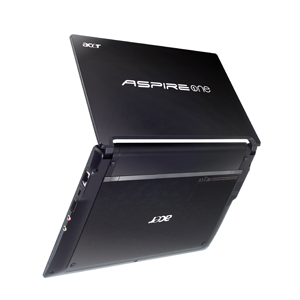 You want a good laptop to get you online and to allow you to watch some movies, answer some emails and work on a document, spreadsheet or PowerPoint presentation.
You want a good laptop to get you online and to allow you to watch some movies, answer some emails and work on a document, spreadsheet or PowerPoint presentation.
So here’s a guide to help you figure out what’s worth paying attention to.
Screen size: The smallest displays are about 10 inches, measured diagonally. This is too small. The next step up is around 11? 1/2 inches, which is great for a second laptop that you can take traveling. But for most of us, 13 inches is the sweet spot — big enough but still portable enough to be thrown in a bag.
Processor: Doesn’t matter. Seriously. Does the laptop you’re looking at have a 2nd generation Intel Core i3-2377M processor running at 1.4GHz with a 3MB L3 cache? That’s wonderful. Oh wait, it doesn’t? Still wonderful. For regular people, all processors are fine. Don’t get bogged down in the details — and don’t pay more for some optional chip that offers an incremental speed boost. For what you need a laptop to do, it’s fine as is.
Battery life: Take a look at this fine print about battery-life specs from Best Buy’s website: “Battery life will vary depending on the product configuration, product model, applications loaded on the product, power management setting of the product, and product features used by the customer.”
In other words, battery-life specs mean little. Have a power cord with you.
Memory: Unlike the processor, RAM (random access memory) does matter. You want 4 gigabytes of RAM. A laptop with less than that will seem sluggish, with annoying delays between the time you click on a menu command or hit a key and something actually happens.
Storage: This used to matter a lot, but with the rise of streaming services and cloud computing, the amount of storage on your computer has become a little less important. Music can be streamed from Spotify, Rhapsody and other services. Documents and other files can live on Google Docs. Photos can be uploaded to iCloud or SmugMug or Flickr. TV shows and movies can be streamed from Netflix, Amazon and Hulu.
Graphics card: For regular use, any graphics processor is going to do the trick.
Wireless: Some laptops are Wi-Fi only, but some have built-in cellular chips so the laptop can get on 3G or 4G networks. Get the Wi-Fi-only model. If you need a cellular data connection, you can wirelessly tether your laptop to your smartphone and use its signal, or you can get a MiFi, a separate device that will share a cell data signal with multiple devices at the same time.
Optical drive: This is that slot or tray you have been using for DVDs or recordable CDs, and it is falling by the wayside. Music has gone largely digital, forgoing physical media. Video seems next. Applications are increasingly downloaded from online stores. So you don’t need the optical drive.
With flash storage, files are stored on a chip, as opposed to a traditional spinning hard disk. Flash storage, also called solid-state storage, is lighter, faster and consumes less energy. It’s also more expensive and has less capacity than some hard disks. But most flash drives still exceed 300 gigabytes, which is enough for most people.
Price: Spending Rs 30000 or so will get you a perfectly fine laptop. Spend twice that or more, and you get into fancier machines that are notably slimmer and lighter. Many of these are called ultrabooks, and they have some things in common.
